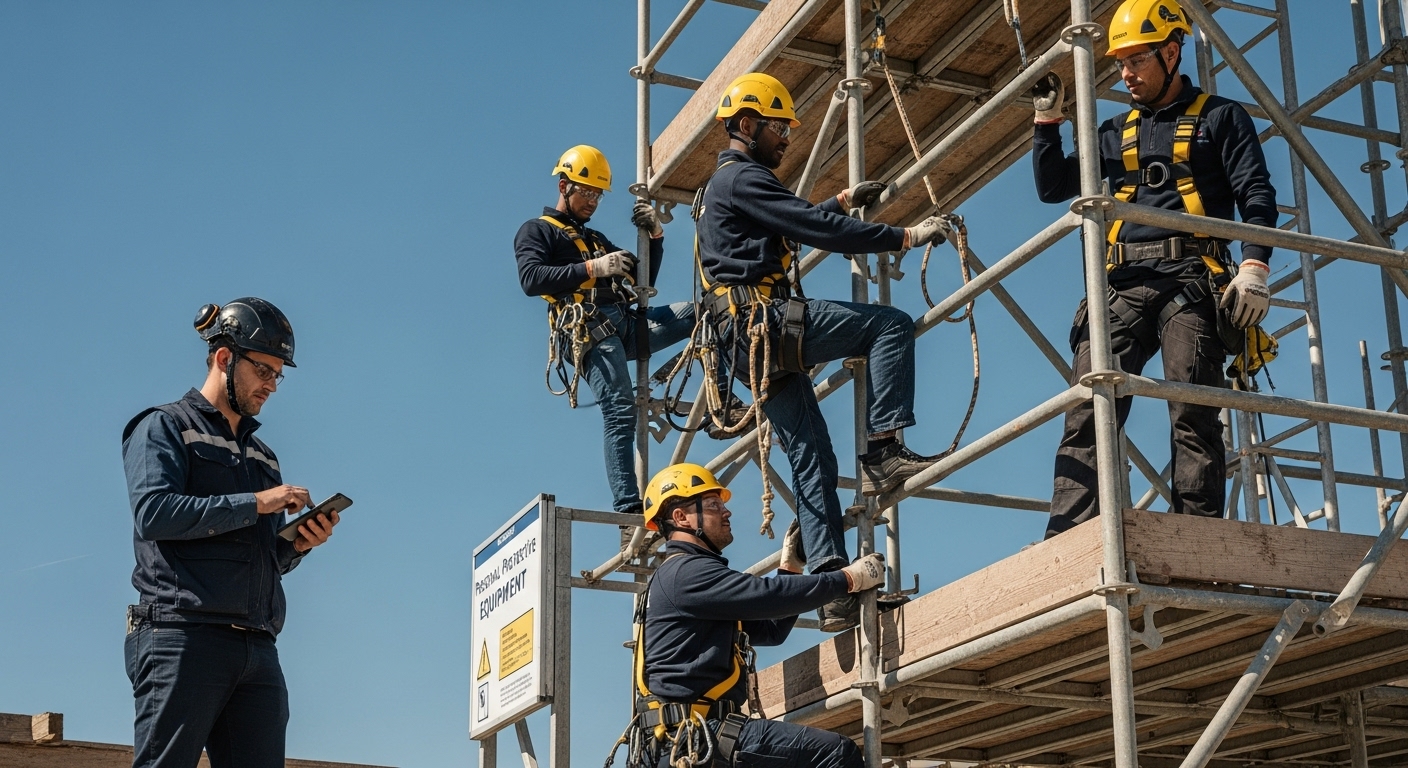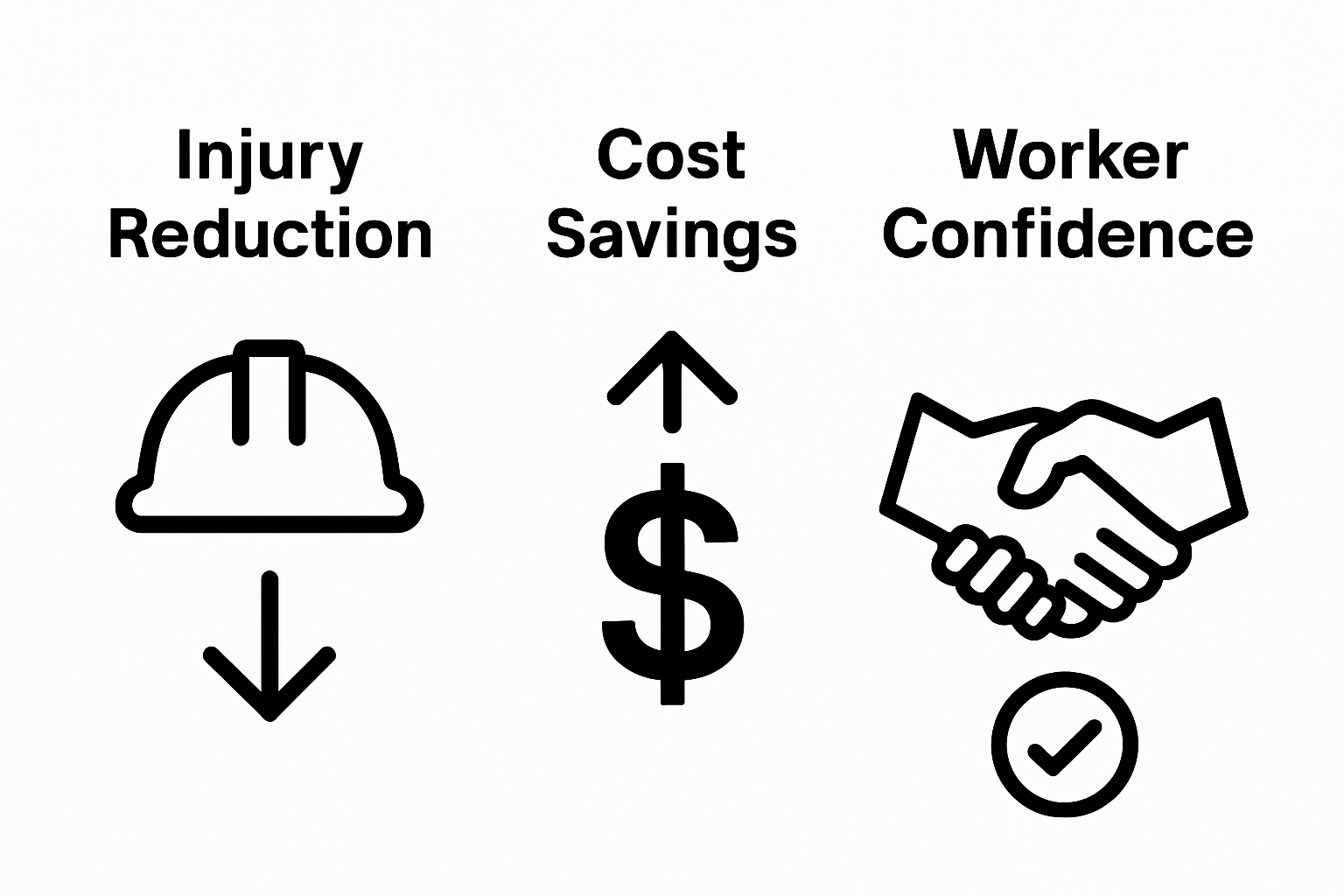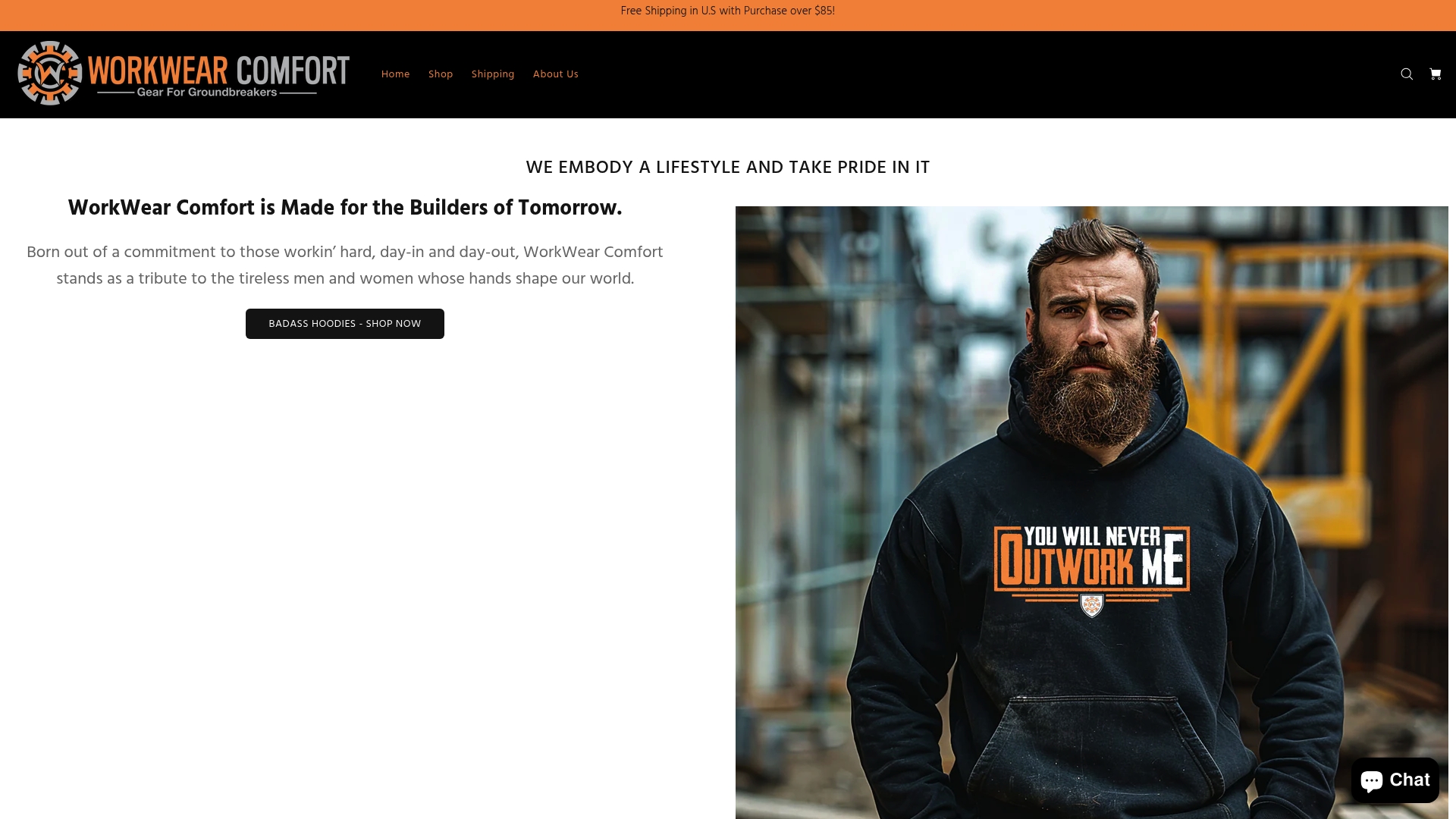Construction sites are some of the most dangerous workplaces out there and accidents can happen in a split second. Yet compliance with safety regulations can cut workplace injury rates by over 50 percent in the industry. You might expect regulations to be a hassle for companies but they actually unlock safer, more efficient job sites and protect workers in ways that go far beyond paperwork.
Table of Contents
- What Are Safety Regulations In Construction?
- The Importance Of Safety Regulations In The Workplace
- Key Components Of Construction Safety Standards
- How Safety Regulations Protect Workers On Site
- Real-World Impact Of Compliance With Safety Regulations
Quick Summary
| Takeaway | Explanation |
|---|---|
| Follow safety regulations strictly. | Adhering to safety guidelines reduces workplace hazards and protects workers. |
| Use personal protective equipment (PPE) consistently. | PPE provides essential protection against common workplace dangers and injuries. |
| Implement regular safety training. | Training ensures workers are knowledgeable about risks and effective safety practices. |
| Conduct thorough risk assessments. | Identifying hazards proactively helps mitigate potential accidents before they occur. |
| Establish clear emergency response protocols. | Having definitive plans ensures quick and effective actions during workplace emergencies. |
What Are Safety Regulations in Construction?
Safety regulations in construction represent comprehensive guidelines designed to protect workers from potential hazards and prevent workplace accidents. These regulations establish critical standards that employers and workers must follow to maintain a safe working environment. Construction safety standards are meticulously developed to address the unique risks inherent in construction work.
Defining Construction Safety Regulations
Construction safety regulations are systematic rules created by government agencies like the Occupational Safety and Health Administration (OSHA) to minimize workplace risks. These regulations cover a wide range of protective measures, including personal protective equipment requirements, workplace training standards, equipment maintenance protocols, and specific guidelines for different construction tasks. By establishing clear expectations and mandatory safety practices, these regulations aim to reduce workplace injuries, fatalities, and long-term health risks.
Key Components of Safety Regulations
The core components of safety regulations in construction typically encompass several critical areas:
- Personal protective equipment (PPE) specifications
- Fall protection requirements
- Electrical safety standards
- Scaffolding and ladder usage guidelines
- Hazardous material handling protocols
- Equipment operation and maintenance procedures
These regulations are not merely bureaucratic paperwork but represent a fundamental commitment to worker protection.
The table below summarizes the most important components of construction safety regulations, providing concise definitions for each feature to help clarify their purpose and role on the job site.
| Component | Definition |
|---|---|
| Personal Protective Equipment (PPE) | Mandated gear workers must use (e.g., hard hats, safety glasses) to protect against job hazards. |
| Fall Protection Requirements | Standards and protocols to prevent falls from heights, including guardrails and harness systems. |
| Electrical Safety Standards | Guidelines to ensure safe handling, operation, and maintenance of electrical systems and tools. |
| Scaffolding and Ladder Guidelines | Safe practices governing the setup and use of scaffolding and ladders to reduce fall risk. |
| Hazardous Material Handling | Procedures for safe storage, labeling, and use of chemicals or dangerous substances onsite. |
| Equipment Operation & Maintenance | Rules for operating vehicles and machinery, along with required maintenance schedules and checks. |
| Construction sites involve complex machinery, elevated work surfaces, heavy materials, and numerous potential hazards that demand rigorous safety standards. |
Understanding these regulations is crucial for both employers and workers. Workwear designed for safety and comfort plays a significant role in implementing these safety standards effectively, providing workers with the necessary protection and confidence to perform their duties safely.
The Importance of Safety Regulations in the Workplace
Safety regulations serve as a critical foundation for protecting workers across all industries, particularly in high-risk environments like construction. These comprehensive guidelines are not just legal requirements but fundamental principles that safeguard human life and well-being. Workplace injury prevention research demonstrates the profound impact of systematic safety approaches.
Protecting Human Capital
At the core of safety regulations lies the paramount goal of preserving human life and health. Construction workers face numerous risks daily, from potential falls and equipment accidents to exposure to hazardous materials. Comprehensive safety regulations create a structured approach to minimizing these risks, ensuring that workers can perform their duties with reduced likelihood of injury or long-term health complications. By establishing clear protocols and mandatory protective measures, these regulations transform workplace environments from potentially dangerous spaces to controlled, safer zones.
Economic and Organizational Benefits
Beyond protecting individual workers, safety regulations provide significant economic advantages for organizations. Workplace accidents result in substantial financial losses through:
- Medical expenses
- Worker compensation claims
- Productivity interruptions
- Equipment damage
- Potential legal liabilities
Companies that rigorously implement safety standards experience lower insurance costs, reduced worker turnover, and improved overall operational efficiency. Our workwear safety guide offers additional insights into creating a comprehensive safety culture.
Moreover, robust safety regulations foster a culture of mutual respect and care. When workers feel their well-being is genuinely prioritized, they demonstrate increased engagement, loyalty, and productivity. This psychological safety translates into tangible benefits for both workers and organizations, creating a positive cycle of professional development and workplace excellence.
This table highlights the organizational and economic benefits that companies experience when they rigorously implement construction safety regulations as described in the article.
| Benefit | Description |
|---|---|
| Lower Insurance Costs | Reducing workplace accidents leads to decreased insurance premiums for employers. |
| Reduced Worker Turnover | Emphasis on safety fosters loyalty and decreases employee loss from workplace injuries. |
| Improved Operational Efficiency | Fewer accidents and interruptions mean smoother, more productive construction workflows. |
| Decreased Legal Liability | Compliance with regulations minimizes legal risks and potential lawsuits from worksite incidents. |
| Enhanced Workplace Reputation | Strong safety records boost a company’s reputation, aiding in talent retention and client trust. |
Key Components of Construction Safety Standards
Construction safety standards encompass a comprehensive framework designed to protect workers from potential workplace hazards. These standards are meticulously crafted to address the complex and dynamic nature of construction environments. Construction safety regulations provide a structured approach to mitigating risks and ensuring worker protection.
Personal Protective Equipment Requirements
Personal protective equipment (PPE) represents a critical component of construction safety standards. PPE serves as the first line of defense against workplace injuries, requiring workers to utilize specific protective gear tailored to their specific job tasks. These equipment requirements typically include:

- Hard hats to protect against head injuries
- Safety glasses or face shields for eye protection
- Steel-toed boots to prevent foot injuries
- High-visibility clothing for enhanced worker visibility
- Respiratory protection in environments with airborne hazards
- Specialized gloves for hand protection
Comprehensive Safety Training and Documentation
Effective safety standards extend beyond physical protective gear, emphasizing comprehensive worker training and rigorous documentation. Construction companies must implement structured training programs that educate workers about potential workplace risks, proper equipment usage, and emergency response protocols. This approach requires detailed record-keeping, including:
- Worker safety certifications
- Equipment inspection logs
- Incident reporting documentation
- Regular safety training completion certificates
Our guide on construction worker gear provides additional insights into selecting appropriate safety equipment and understanding its critical role in workplace protection. By integrating thorough training, comprehensive documentation, and appropriate protective equipment, construction safety standards create a holistic approach to worker safety that goes beyond mere compliance, focusing on proactive risk management and employee well-being.
How Safety Regulations Protect Workers on Site
Safety regulations serve as a comprehensive shield for construction workers, providing multiple layers of protection against potential workplace hazards. These regulations are meticulously designed to create a systematic approach to risk management and worker protection. Workplace safety research demonstrates the critical importance of proactive safety interventions in high-risk work environments.
Risk Identification and Mitigation
Safety regulations function as a proactive defense mechanism against potential workplace dangers. They require employers to conduct thorough risk assessments, identifying potential hazards before they become critical threats. This process involves comprehensive site evaluations that examine:
- Equipment functionality and maintenance status
- Potential environmental risks
- Worker exposure to hazardous materials
- Structural integrity of work areas
- Potential mechanical and electrical dangers
By mandating systematic risk identification, these regulations transform reactive safety approaches into predictive, preventative strategies that anticipate and neutralize potential workplace threats.
Emergency Response and Intervention Protocols
Beyond initial risk assessment, safety regulations establish robust emergency response frameworks. These protocols ensure workers have clear, actionable guidelines during critical incidents. Comprehensive emergency planning includes:
- Precise evacuation procedures
- Clear communication channels
- Designated emergency medical response teams
- Specific protocols for different types of workplace incidents
- Regular emergency preparedness training
Our workwear guide offers additional insights into how proper safety equipment supports these critical intervention strategies. By creating structured, predictable responses to potential emergencies, these regulations significantly reduce the potential for catastrophic outcomes and ensure workers have the knowledge and tools to protect themselves effectively.
Real-World Impact of Compliance with Safety Regulations
Safety regulations transcend theoretical guidelines, demonstrating tangible, life-saving impacts across construction environments. Effective compliance transforms workplace culture, creating systematic approaches that directly reduce accidents and protect human lives. Workplace safety research reveals compelling evidence of the profound benefits of rigorous safety standards.
Statistical Evidence of Safety Impact
Numerous studies highlight the critical role of safety regulation compliance in preventing workplace incidents.
 Construction sites implementing comprehensive safety protocols experience significant reductions in:
Construction sites implementing comprehensive safety protocols experience significant reductions in:
- Workplace injury rates
- Fatality occurrences
- Long-term worker disability claims
- Unexpected project interruptions
- Financial losses related to workplace accidents
Quantitative data consistently demonstrates that investment in safety regulations yields substantial returns. Companies committed to robust safety standards not only protect workers but also minimize economic disruptions and potential legal complications.
Organizational and Human Benefits
Beyond statistical metrics, safety regulation compliance generates profound organizational and human benefits. Workers in environments with strong safety cultures experience enhanced:
- Professional confidence
- Job satisfaction
- Psychological security
- Trust in management
- Overall workplace morale
Our comprehensive workwear guide provides additional insights into how proper equipment and safety practices contribute to creating supportive work environments. The real-world impact of safety regulations extends far beyond preventing immediate physical harm, fundamentally reshaping workplace dynamics and establishing a culture of mutual respect and proactive risk management.
Raise Your Safety Standards with Durable Workwear
Staying compliant with strict construction safety regulations is not just about checking boxes. It is about protecting yourself and the people you work with every single day. You already know how vital it is to have the right gear when facing on-site hazards. Choosing the proper personal protective equipment and reliable apparel is a direct reflection of your commitment to workplace safety. When every detail matters in minimizing risks, only quality clothing really measures up to both your job’s demands and regulatory standards.

Upgrade your workwear today and make worker protection a visible priority. Visit WorkwearComfort.com to explore our full collection of tough, comfortable work apparel including options designed for compliance and confidence. Take action now to create a safer work environment and set the standard for your whole crew. Check out our safety gear guide or learn more about essential construction workwear designed with real job sites in mind.
Frequently Asked Questions
What are construction safety regulations?
Construction safety regulations are comprehensive guidelines established to protect workers in the construction industry from potential hazards and workplace accidents. They cover a range of protective measures, including equipment requirements and training standards.
Why are safety regulations important in construction?
Safety regulations are essential in construction as they aim to prevent workplace injuries, protect workers’ health, and minimize financial losses for companies due to accidents. They create a structured environment that prioritizes worker safety.
What are some key components of construction safety standards?
Key components of construction safety standards include personal protective equipment (PPE) specifications, fall protection requirements, electrical safety protocols, scaffolding usage guidelines, and hazardous material handling procedures.
How do safety regulations help in emergency situations on construction sites?
Safety regulations help in emergency situations by establishing clear protocols for evacuation, communication, and medical response. They ensure that workers are trained in emergency preparedness, which reduces potential catastrophic outcomes.
Recommended
- Best Workwear for Electricians: Top Choices for 2025 - WorkWear Comfort
- Understanding Workwear for Construction: Key Insights – WorkWearComfort
- Preventing Workplace Injuries: Essential Safety Steps – WorkWearComfort
- 7 Essential Tips for Costumes Construction Worker Gear – WorkWearComfort
- Working at Height Regulations South Africa: Essential 2025 Guide - Sterling Access
- Conformità normativa nei cantieri: comprensione e importanza - Sikuro


